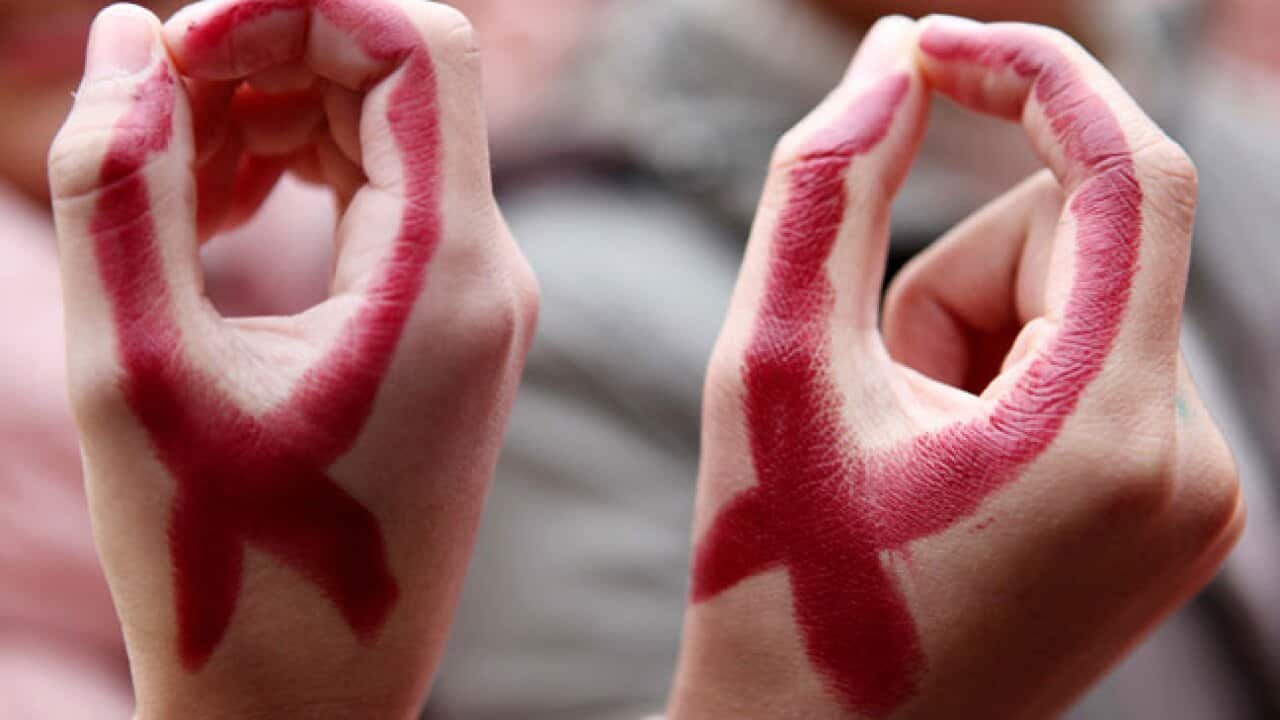The report by the University of New South Wales attributes it mainly to an increasing number of young men having unprotected casual sex with other men.
While the numbers remain relatively small, health professionals and researchers continue to express concern at the the increasing number of newly-diagnosed HIV infections.
In 2012, there were more than 1200 new cases - a 10 percent increase.
(Click on the audio tab to hear the full report.)
Associate Professor David Wilson from the Kirby Institute at the University of New South Wales says it's the largest annual increase in 20 years.
He says the biggest increase has been in gay men under the age of 25.
"Quite recently we have seen a shift towards those particularly in their 20s, who are newly acquiring HIV and it's not surprising that they weren't exposed to the early fear campaigns around the AIDS epidemic in the mid-1980s," he says.
"And today HIV is a very different disease, to what it was in the 1980s. We now have effective treatments which keep people alive for much longer.
"So a degree of complacency has set in, to the general population, of those that are most at risk. So what we're seeing is that condoms are not being used as frequently as older men, as was happening in the past. And that's the most likely reason for the increase."
The report says around 26,000 Australians know they have the HIV virus.
But it says there may be thousands of others who have the infection and don't know it.
Associate Professor Edwina Wright is President of Australasian Society for HIV Medicine.
She told a panel discussion organised by The Australian Science Media Centre more needs to be done to encourage Australians to get tested.
"The reason why this is so important is because we think that there may be between 5 and 10,000 Australians who are completely unaware that they are HIV positive, and through their lack of knowledge of their HIV status they're naturally not going to be accessing, appropriate treatment nor are they going to be coming into regular contact with health care providers who are going to be talking to them about safer sex and being with their partners and reducing transmission.
"And it's likely in the people who are unaware of their HIV status that they in fact are unwittingly are functioning as the key driver of rising HIV diagnosis rate. We need increased funding for HIV prevention especially for Aboriginal and Torres Strait Islander people and we need funding to optimise surveillance for HIV and STI testing."
The report shows infection from injecting drug use appears to be a factor in the transmission of HIV in some Indigenous people.
James Ward is with the Melbourne-based Baker medical research institute.
He says the same has happened with Canada's Indigenous population.
"We need to learn from the lessons of Aboriginal first nations and Aboriginal people in Canada. They represent 3 per cent of the population, but it's reported 18 per cent of all the HIV diagnosis.
"Largely the epidemic is represented by people who inject drugs. If anything we really need to look at our responses to Aboriginal people who inject drugs in the community to make sure that HIV transmission is minimised."
The report shows that just under 60 percent of infections acquired through heterosexual sex are among people born Asia or Africa or from people or whose sexual partners were born in these regions.
Associate Professor David Wilson says it acts as a timely reminder for Australians born overseas, or for Australians travelling overseas, to practise safe sex.
"We need some campaigns targeting migrants to Australia particularly when we have migrants from Africa, particularly Southern Africa. Rates of HIV are substantially higher and we have some migrants coming to Australia.
"Some have HIV coming into Australia, through some of these populations. These communities when they come into Australia they don't have the same access to health services.
"They don't have the same prevention messages and the rates are higher than in Australia-born people and if Australian-born people are sexual partners with these people, then Australian born people are at greater risk as well as what we're seeing."

